Accessing coastal visitor flow, public infrastructure and environmental pressures
One million people could relax on the coast of the Baltic Sea in the territory of Latvia at the same time - this calculation is based on mathematical estimation if 495 km of Latvian coastline would be occupied with 5-10 sq m per visitor. Although unrealistic in general, in many coastal places anthropogenic pressure is ongoing challenge in any season.
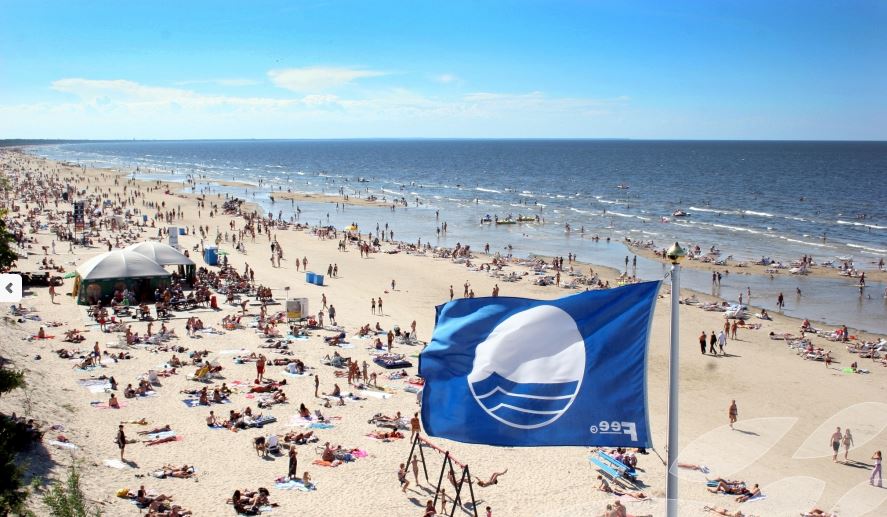
Jūrmala beach (sourse: https://www.latvia.travel/lv)
Without a doubt coastal area is very sensitive space with vast cultural and natural values which simultaneously attract people, generate economic opportunities and encounter impacts of local and global environmental threads.Interactions and links of land, sea and society vary from intangible values like symbolic values of the seaside landscapes to factual flows of visitors or physical connectedness of natural ecosystem.
It is important to access existing situation in coastal areas to support decision makers responsible for coastal areas to manage present and plan for the future based on up-to-date data, and while balancing ecosystem vulnerability and benefits of local communities and interests of visitors.
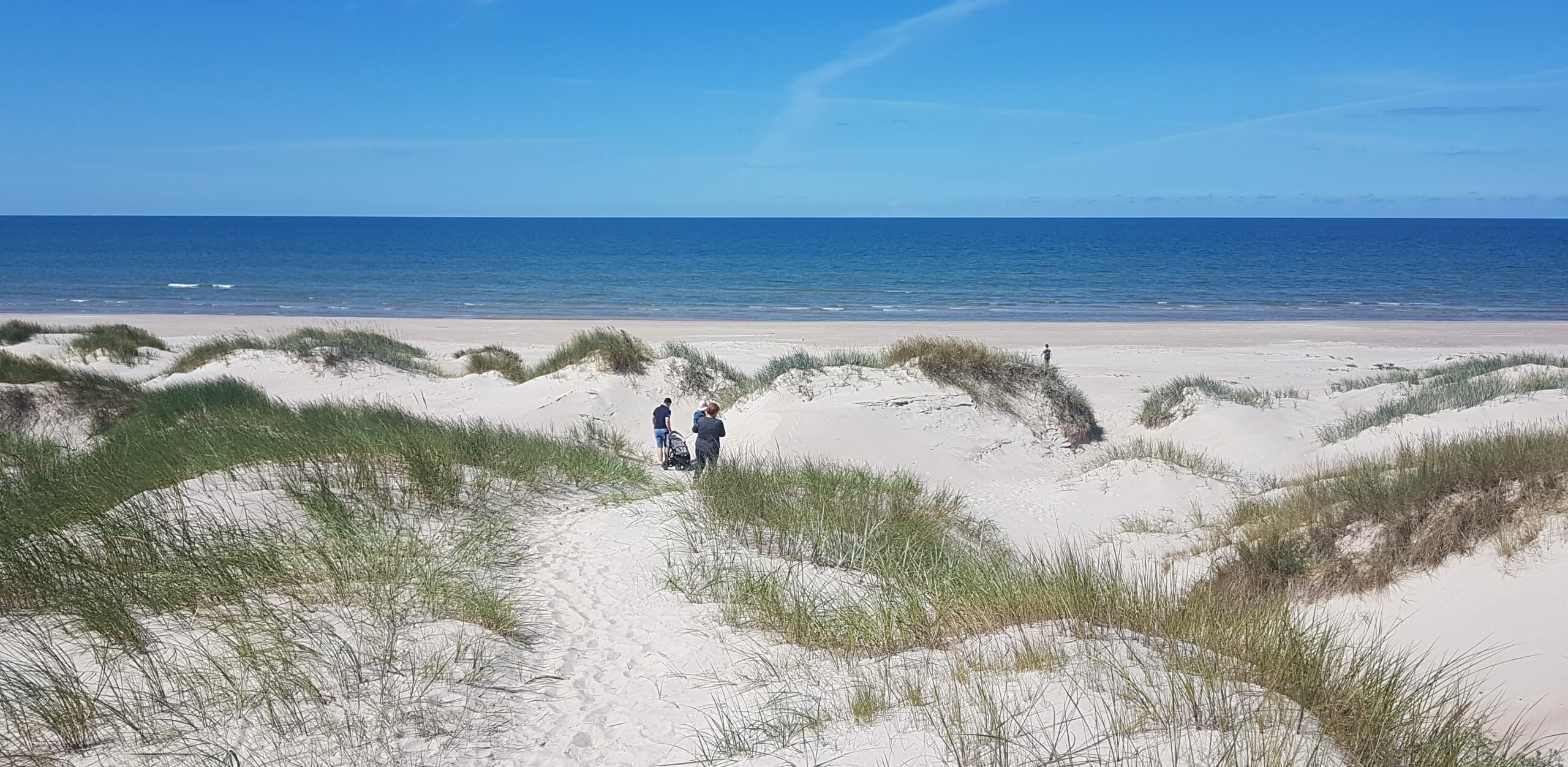
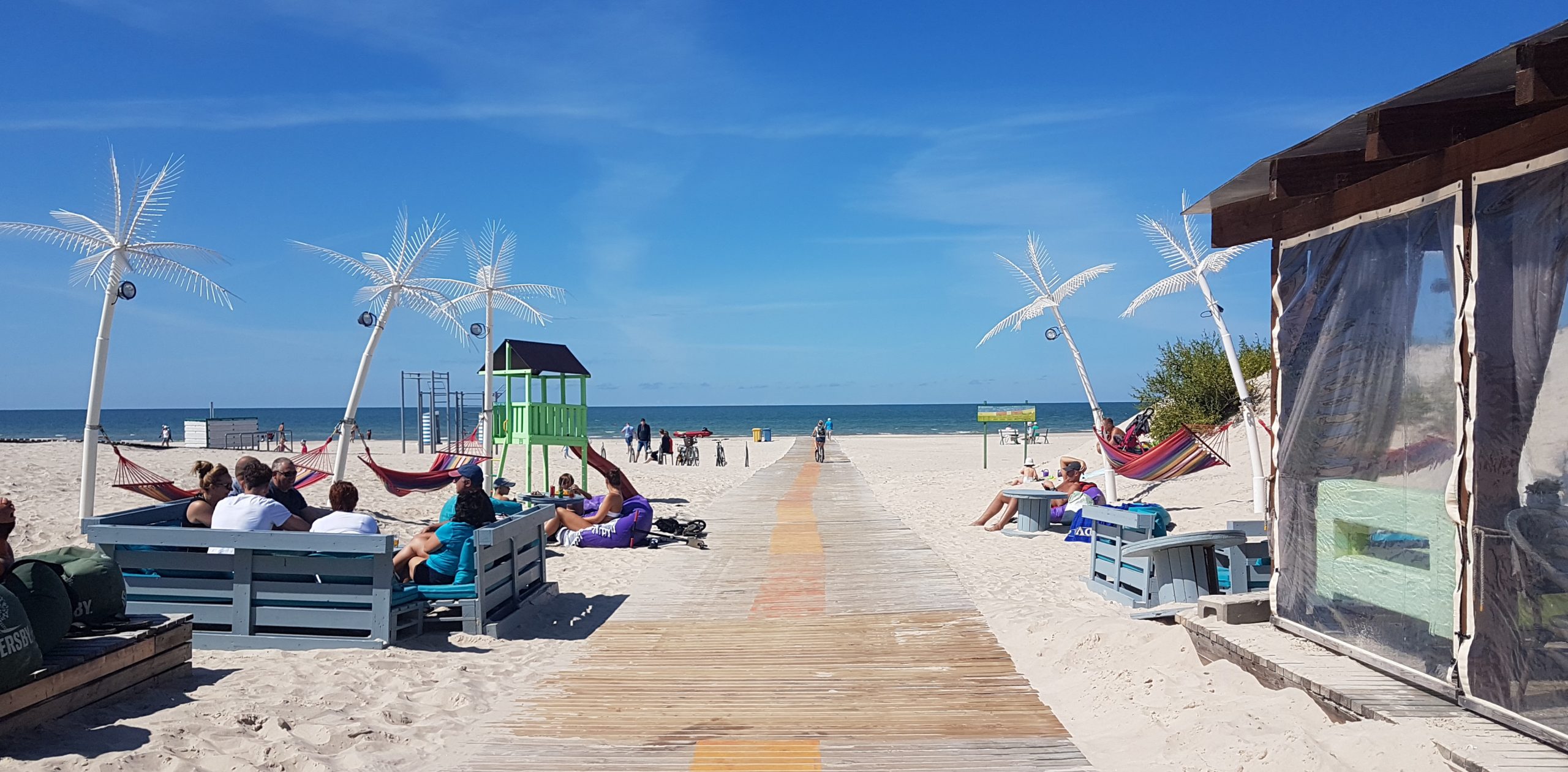

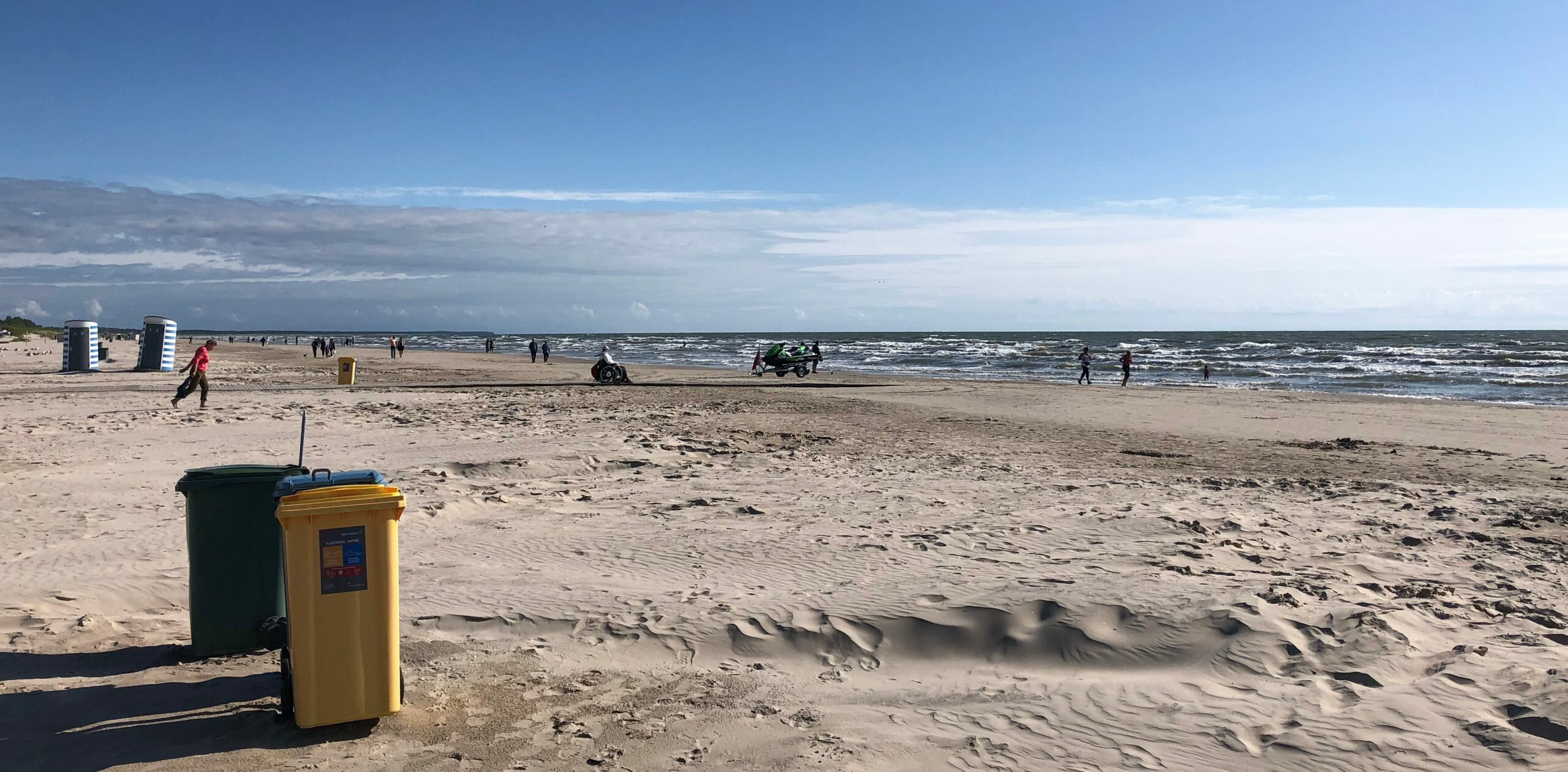
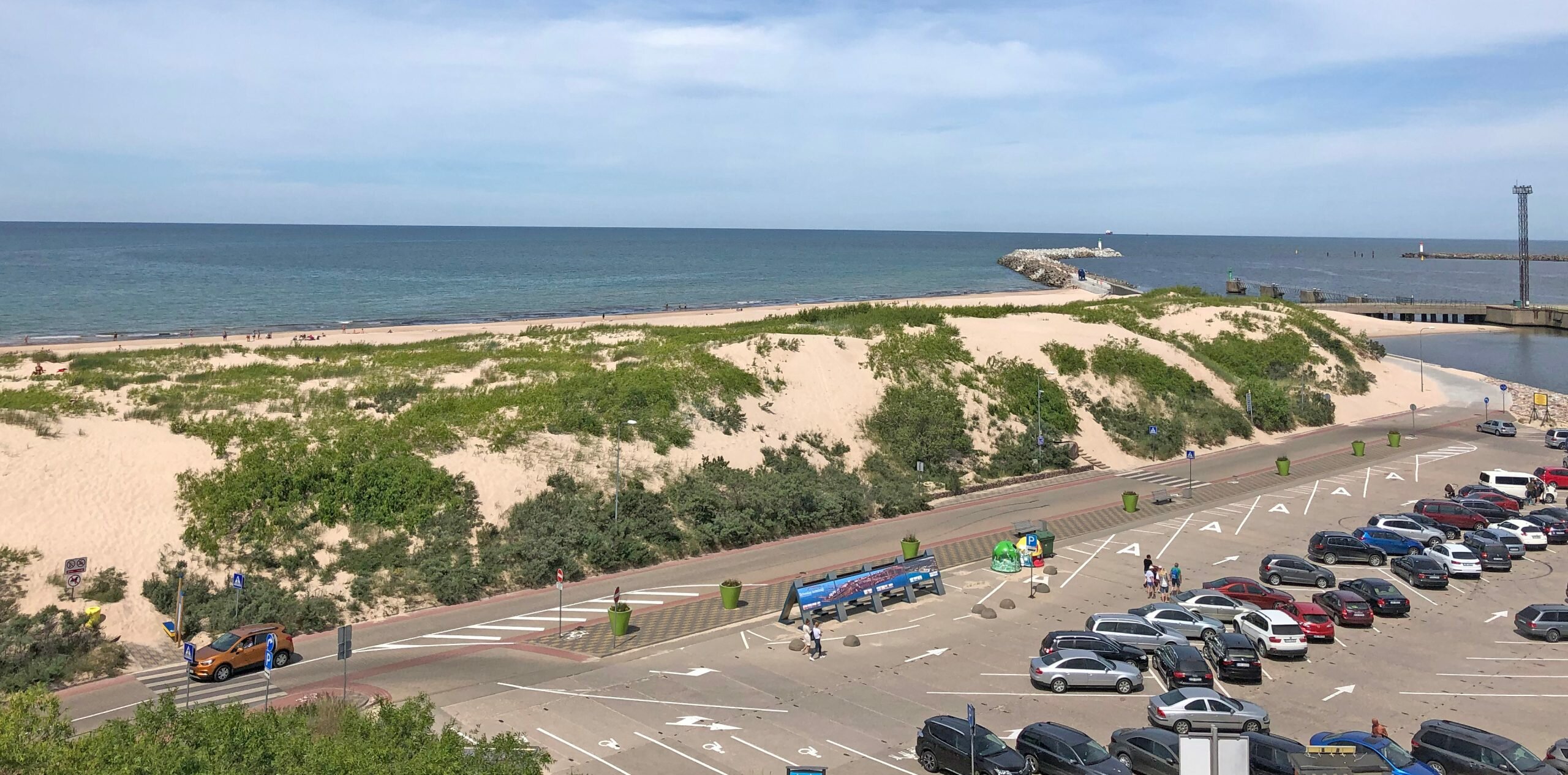
Coastal landscapes and activities (source: Klepers,2019 and Vološina 2019,2020)
In this regard, in 2015, first coastal assessment of visitor flows to the Baltic Sea coast, their impact on coastal environment and assessment of public infrastructure quality and sufficiency for reducing anthropogenic environmental pressure was carried out. This assessment was part of the elaboration of National long-term thematic plan for public infrastructure development in Coastal area of Latvia (Coastal plan), what was approved in 2016.
In 2019, Ministry of Environmental Protection and Regional Development of Latvia within the Land-Sea-Act project completed second coastal assessment of the visitor flow to the Baltic Sea coast and coastal public infrastructure in the context of a anthropogenic environmental pressure.
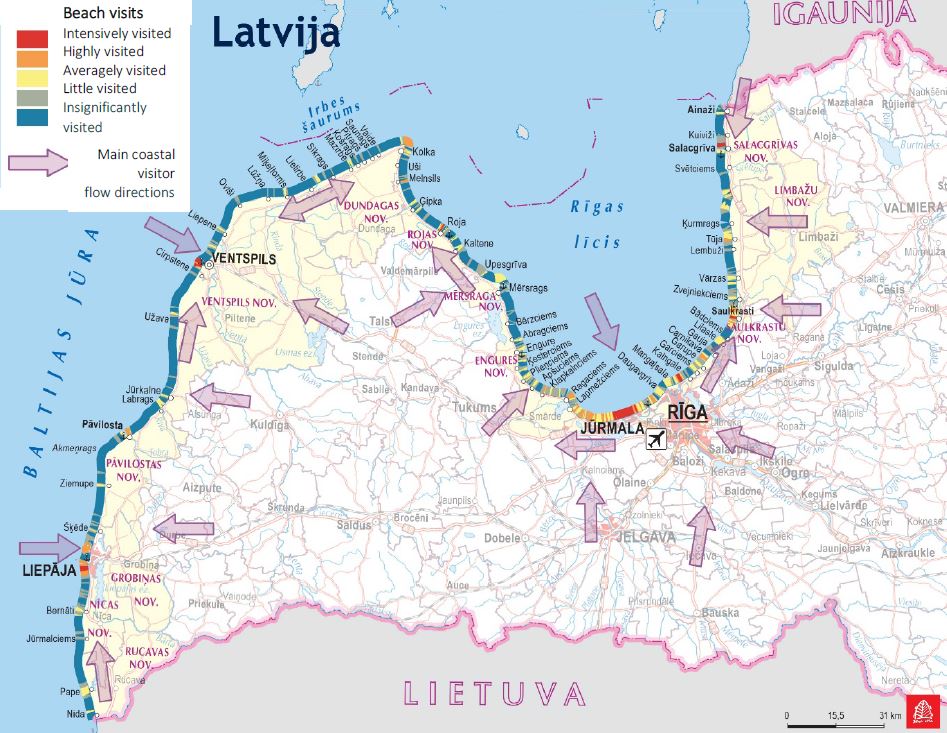
Main visitor flows to the Baltic Sea coast and intensity of beach visits in 2019 (source: Nocticus, Jāņa Sēta, 2020)
Assessment touches on issues of visits and accessibility of Baltic Sea coast; beach visitor pressure on coastal vegetation; evaluation of coastal public infrastructure and marine litter problems. Eventually actions to overcome main challenges are proposed. Even though there is a need for new infrastructure development in intensively visited places with large anthropogenic pressure to the vegetation, but there is even bigger need in filling the gaps in the existing infrastructure elements and in improvement of the maintenance.
English summary of the assessment is available here: LSA Coast Visits Summary 2020
Several reports (in Latvian) contain information ranging from the methodology description to the depiction of the results and conclusions for each coastal municipality.
Gathered data is also visualised in an interactive map here.
All Reports as well as results from previous assessment can be found here.
Prepared by Margarita Vološina (Ministry of Environmental Protection and Regional Development of Latvia) /July 2020/

